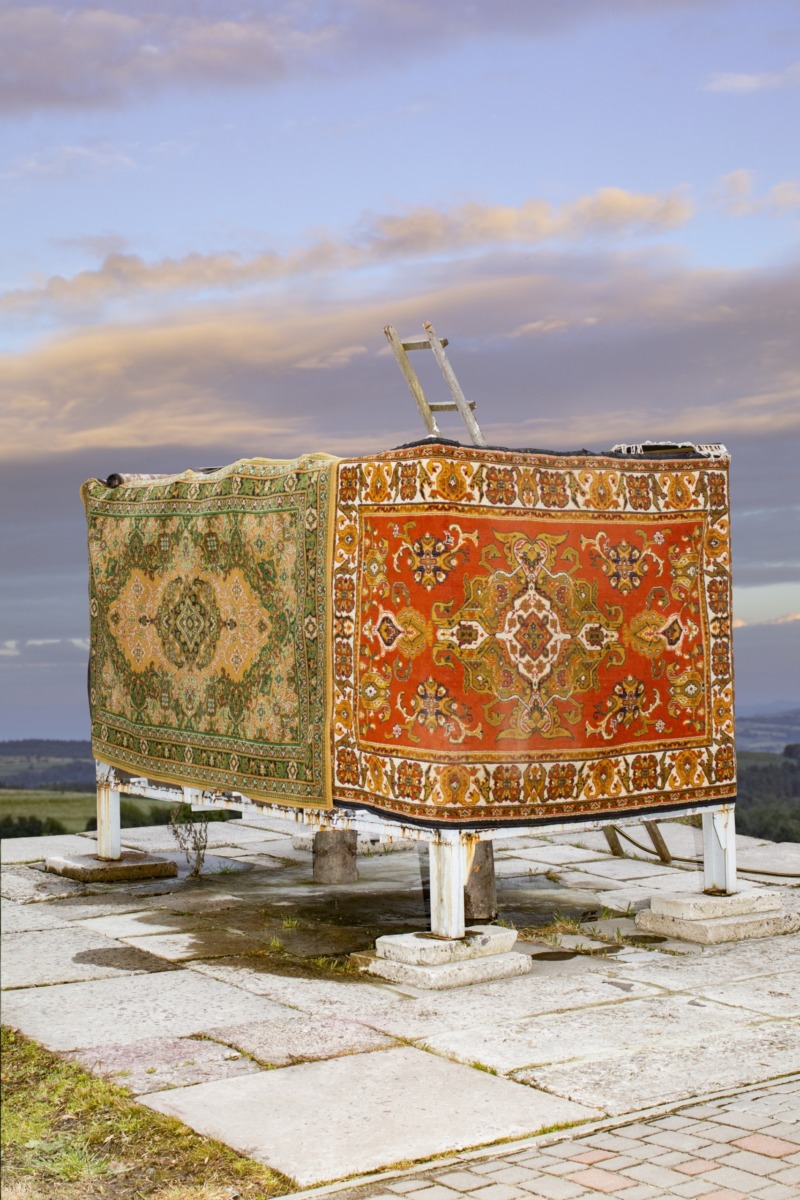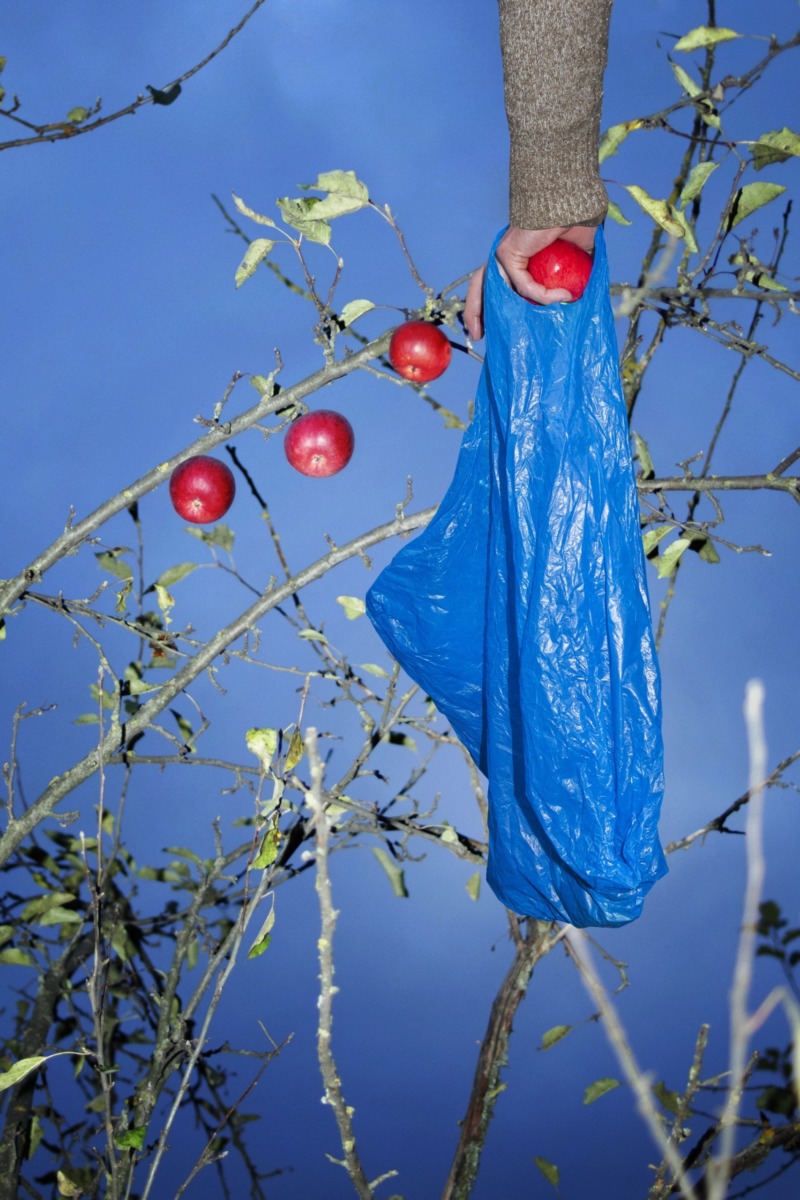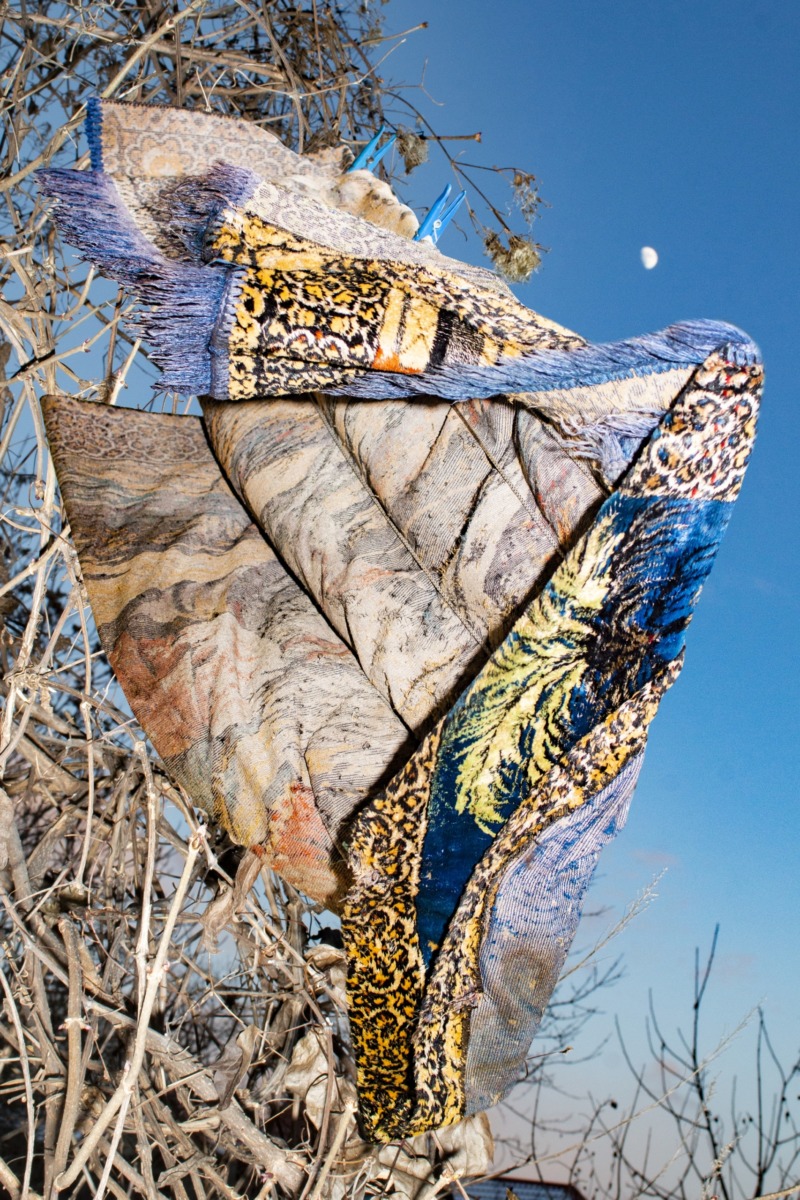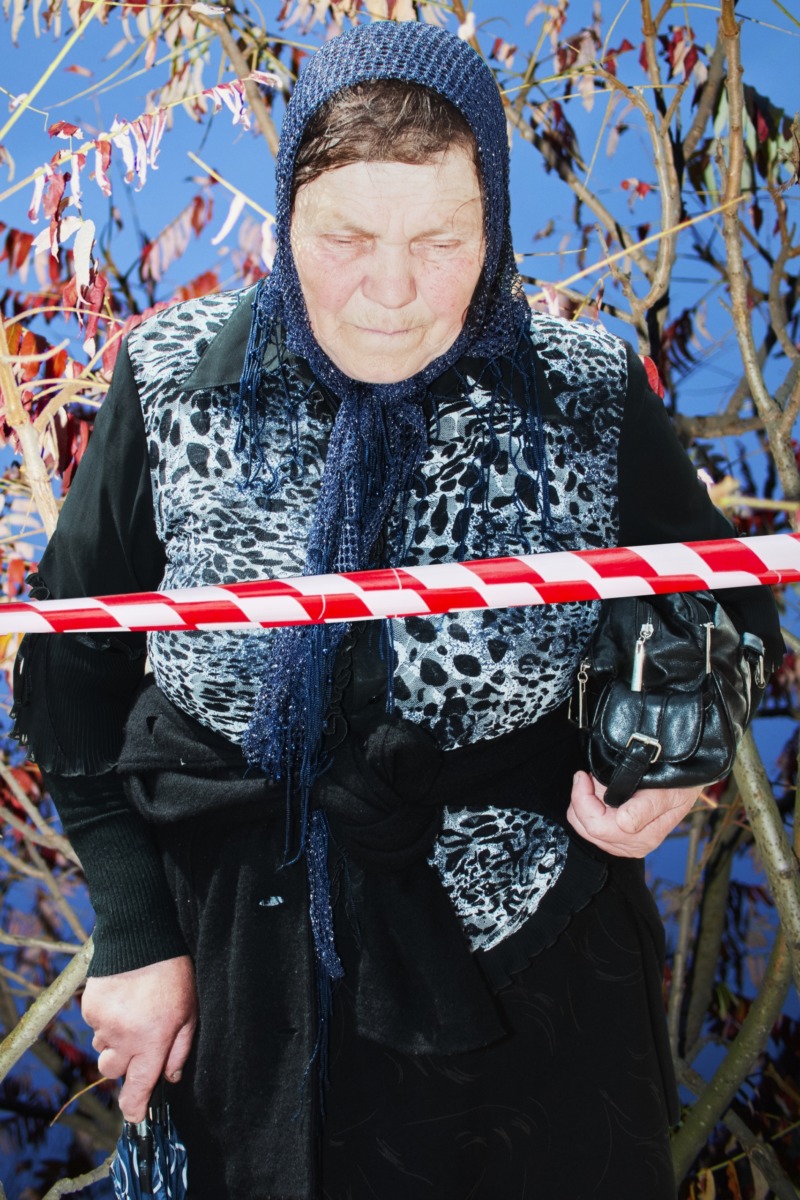Interview – Elena Subach: Grandmothers on the Edge of Heaven
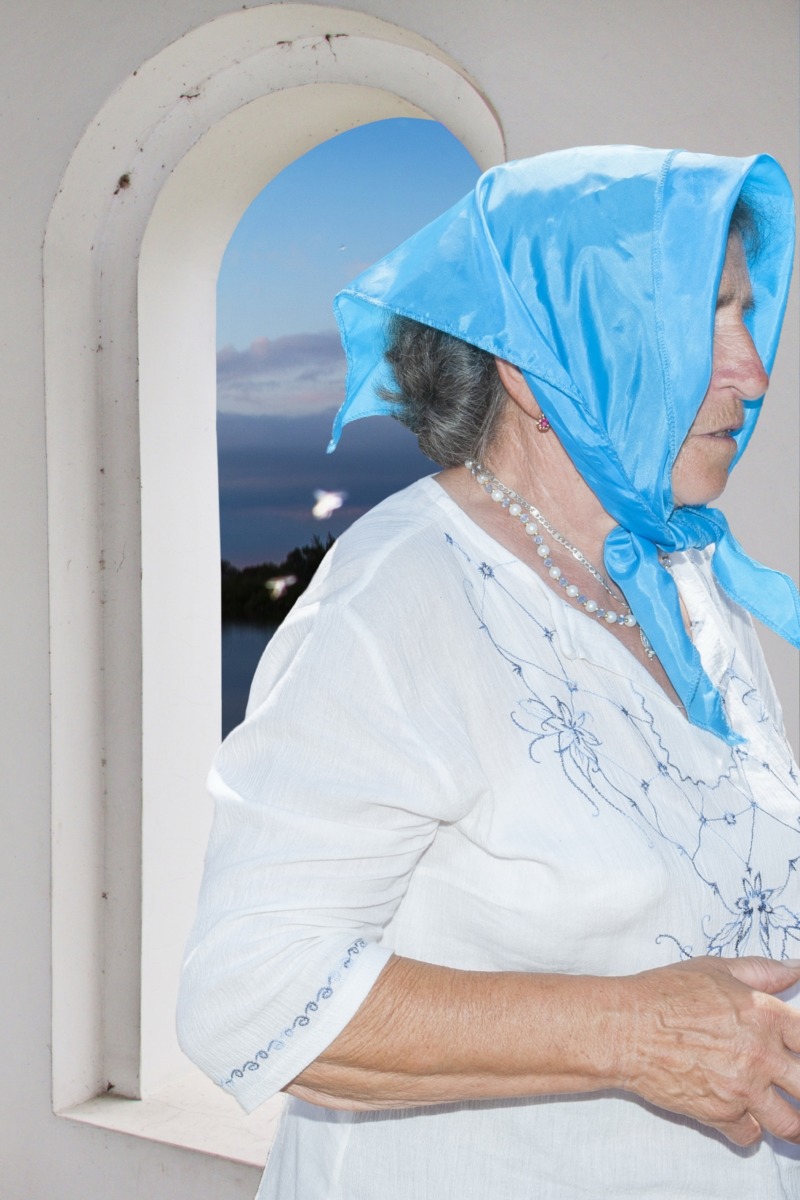
Elena Subach’s latest photography series sheds new light on the hardships the elderly have to face in Ukraine week after week. With just $70 worth of pension in their pockets, this generation is forced to overcome difficulties that would be unimaginable for their younger counterparts. To challenge the mainstream media narrative, the photographer set out to make new connections with all sorts of people who only had one thing in common—that they were all experiencing the physical and mental symptoms inherent to ageing.
As Subach explains, some of her subjects were devoted church-goers, powerful figures who could easily cast new doubt on the authority of any priest attempting to deliver a sermon—as they had a much better knowledge of the liturgy—alongside enthusiastic homemakers, domestic goddesses, and people who would grab a chair and sit on the pavement for hours to spot just one unusual occurrence.
A keen reader of anthropological and art historical texts, Subach lists Kristen Hawkes’ grandmother hypothesis, religious iconography, and the Dutch Golden age as some of the main sources of inspiration for the series. A testament to altruism, Grandmothers on the Edge of Heaven aims to remind viewers of the importance of looking out for each other.
How did you come up with the idea for Grandmothers on the Edge of Heaven? Was there a story that drew you in?
My first experience working with elderly people was back in 2016. Some authors asked me to make photo illustrations for a children’s picture book, Chicken’s Constellation. One of the tasks was to tell children about old age without melancholy. In this book, everything was other way round. The main character is an old grandmother Maria who lives high in the mountains. She blows everyone’s socks off and has a friendship with a little girl. The main idea was to find existing characters to shoot and then make photo collages. Together with the authors, I went to the mountain village of Krivorivnya. During a church service among dozens of other grannies, we met a grandmother who seemed to us an ideal heroine. We asked her to participate in the project, and she immediately agreed. Her name was Vasilina Zelenchuk, and she was the first grandmother I made a portrait of.
I became very interested in grandmother ‘subculture’. The way they combined fabrics, colours, and textures in their outfits during the holidays and on Sundays was just magnetizing. The essential attribute of women’s attire in the church is a headscarf, and their diversity attracted me very much. After all, among other things, it is a very symbolic item. For example, during a traditional wedding in Ukraine in one of the rites a wreath of flowers is taken off a bride’s head and a scarf is tied around it.
I was taking pictures “for the soul” as one may call it. Two years passed before I made them into Grandmothers on the Edge of Heaven. I needed an internal impulse that could help to transform the archive into a new story, and for me, this impulse was the death of my grandmother, with whom I grew up. It made me take a fresh look at the life of older people in our country, Ukraine. Old people in our country are one of the most vulnerable parts of the population. The average pension is $70 per month. This money is not enough even for food and medicine. It is like that because of the war, because we have always had and will have some serious political issues and economic problems. Because there is always something more important than the elderly, and they can only be used as the necessary number of voters in the elections, as they are so trusty and always believe these promises of better living conditions for them.
How did you come across Kristen Hawkes ‘The Grandmother Hypothesis’, and what did you find appealing about the book?
I am interested in anthropology, and I knew Lev Klein and Stanislav Drobyshevsky used the term “grandmothering” in their books. I also heard curators mentioned the same thing during one exhibition in Kiev. So in fact, I simply had no chance not to get acquainted with Kristen Hawkes’s theories.
Today, of course, the protection of offspring is not the main task of the older generation, and the role of grandmothers in the modern world differs from the one played 60,000 years ago. Fewer families live according to a multi-generational structure, and more often professionals take care of children. Their influence has shifted from a purely physical sphere to a spiritual one. And under optimal conditions of age, living, and education of both grandmothers and grandchildren, the most direct impact is made on the intellectual growth of the child. It seems to me, geography does not matter here, it’s true worldwide.
The situation with the COVID-19 is frightening and it makes us take a fresh look at older people and think about the role of older generations in the past and future of our community. And I want to believe that the potential of altruism, love, and care, which made a man out of a monkey, has not yet been exhausted.
When you look at the pictures, it’s almost as though you were looking through a young person’s admiring eyes – is this play with the ‘gaze’ intentional?
It was quite an intuitive process, it can hardly be called ‘planned’. In the very beginning, I didn’t want to show these photos to anyone because I considered it a deeply personal and therapeutic process. Probably this is what made it so honest. I created pictures and listened to the sensations. It was of high importance to find a certain balance and harmony within the image itself, such a moment of completeness. When I started to transform female figures into idyllic landscapes, I felt that it was right. I was connected to my memory and emotions. Perhaps in some way, it was like an act of adoration, but, first of all, it was about letting go and releasing myself.
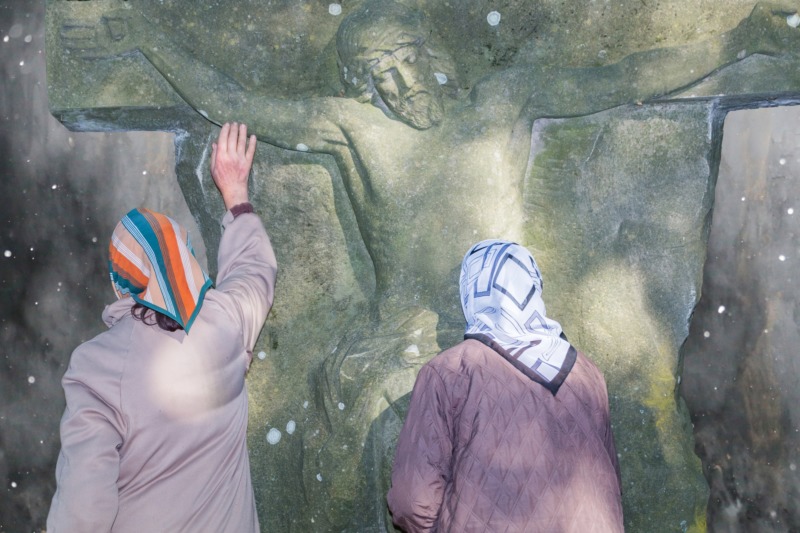
There’s a rich array of art historical references to be found in the photographs. Were these conscious choices?
The work on the project was mostly intuitive, so all the artistic references more likely reflect my art preferences than a planned decision. I realised it only later when analysing. Sometimes I was even surprised by some sources of inspiration.
I adore the naive folk icon, as well as the early Renaissance, Quattrocento, and the Dutch school of painting. My interests span the point in history when the icon gave way to the painting, but before the portrait became an autonomous secular genre and remained part of the religious composition.
By using flash, I wanted to show the obvious connection of the grandmothers with Heaven, and to make them look like the faces in icons. In comparison with the naturalistic transmission of the surrounding world, icon painting uses flatness. There is another reason for my love of flash; Ukraine is very colourful, and working with this visual chaos using flash helps to organize the image, make it more graphic, more two-dimensional, closer to the iconographic traditional image.
Could you explain the meaning of the dominant colours?
Well firstly, I just really like the colour blue very much. But it’s very clear – the colours that dominate the project are also canonical colours of icon painting, where they are not random but are symbolic. There is a lot of blue in the series, for example, which means the infinity of heaven and is a symbol of eternal peace. Or red, as a symbol of the victory of life over death. Sometimes red backgrounds were used in icons as well as a sign of the triumph of eternal life. And I, for example, have red paradise apples in my photos.
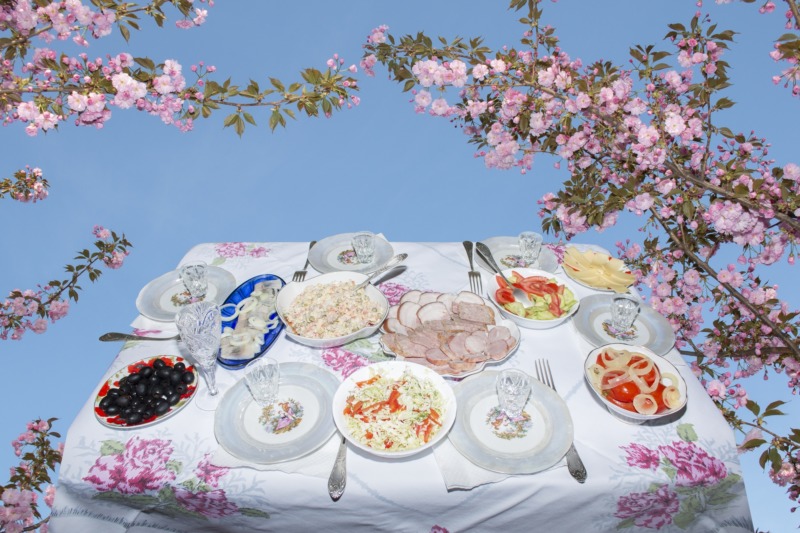
How did you meet your subjects and how long did it take to build a rapport? Did you encounter any obstacles, cultural clashes, or strange occurrences throughout the process?
Everyone is different. One is wise, grateful, calm, judicious, radiant, and one is not. There are very sad and depressed people who lost the ability to rejoice. I can’t know for sure and generalize the daily life of older people, I can only share some observations. It is not a classification, just a few examples.
There are grandmothers whom even priests are scared of. How come? They know all the rules of rituals better than clergymen, it’s every grandmother’s favourite hobby. They are always watching carefully, and when anyone slips up during the church services they start spreading rumours, gossiping about it, and stare, whisper and giggle. One might lose credibility due to grandmothers.
There are others who sit alone at home. It’s difficult for them to go outside for a walk or to the shop because it means then they need to go back up the stairs. Twice a week on Wednesday and Sunday, at 6pm they’re sitting and looking at the phone because any minute their daughters who live in Italy will call. They went there to earn money and never came back. They only call twice a week, and these conversations last about 10 minutes.
Some have outlived their husbands, already feel weak in the afternoon, cannot walk and have to lie down. But to make their collages, write a book and have guests, they get up at 5am and ask to come to visit around 9am to drink coffee and talk about planets.
Then there are lucky ones. The ones whose husbands are still alive, they have lived a long life together, they remember a lot and like to compare the Soviet Union and independent Ukraine and argue about politics. Their families live in the same house with them, so they all can take care of each other.
There is only one thing which is common for all of them – it’s difficult to be a grandmother. Their bodies let them down, they are weak and sick, but they remember those times when they were filled with energy and strength.
Could you please tell us about your grandmother? What are your favourite memories of her?
I liked it when my grandmother was telling a love story of herself & my grandfather. She became very inspired those moments. She worked as a waitress in the canteen. Once a group of young builders came there. They all were brought up in an orphanage, and then they had to work for several years, ‘for the good of the Motherland’. It was right after the Second World War and the guys were restoring destroyed bridges. Grandfather fell in love with granny, at first sight, he wrote a note to her and put it in her pocket. She did not reciprocate his feeling back, so he had been writing to her for several days in a row, and then they finally had a date. Love turned their heads, but soon the bridges were restored and the grandfather’s squad was relocated to the other side of the country. He couldn’t live without her, and risking of being sent to prison for violating his obligations to the country, he went to the boss, told his story. It touched him so that the boss agreed to release my grandfather from work. Since he had no money, he had been travelling to my grandmother on the roofs of freight trains, practically without food or sleep. Eventually, he reached her.
My grandmother used to say: “That moment I realized he was my fate, and from then, we were never apart”.
